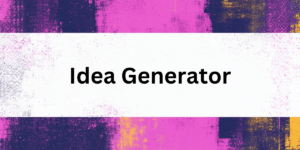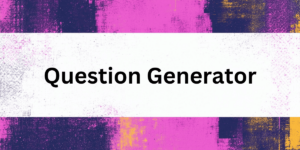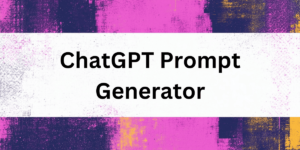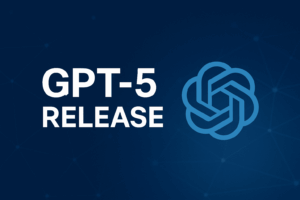Have you ever found yourself lost in a sea of digital information, struggling to find the exact document you need? The solution lies in efficient and effective search engines. Keyword search has been the go-to method for years, but is it really the best option? Enter dtSearch Relativity, a powerful and precise search engine that offers advanced features, such as fuzzy searching and synonym dictionary. In this article, we’ll explore the differences between these two search methods, and evaluate the pros and cons of each. By the end, you’ll have a better understanding of which search engine is right for your needs. Choosing the right search engine can make all the difference when it comes to productivity and reaching business goals.
1. Keyword Search vs. DTSearch: Which One Wins?
When it comes to searching for specific information in a bunch of documents, two popular methods are keyword search and DTSearch. But which one works better? Let’s take a closer look.
Keyword search is when you type in a string of words, called a query, and the search program looks for any documents in its index that contain those words. It’s quick, simple, and works well if you know exactly what you’re looking for. However, it can also return a lot of irrelevant results or miss documents that use different words or phrasing.
DTSearch, on the other hand, uses advanced algorithms to search the full text of documents, not just an index. It can handle complex queries with operators like “AND,” “OR,” “NOT,” and fuzzy searching that takes into account spelling errors and synonyms. This means it can find documents that keyword searches might miss, but it can also be slower and more complicated to set up and use.
So which one is better? It depends on your needs. If you’re looking for something specific and have a good idea of what words to search for, keyword search might be faster and easier. But if you need to search large volumes of text or want to find related documents based on more complex queries, DTSearch is the way to go.
Regardless of which method you choose, it’s important to use the right search terms and operators to avoid “noise” (irrelevant results) and get the most out of your search. And if you’re using a program like Relativity, make sure to familiarize yourself with its search capabilities to get the best results possible.
2. A Comprehensive Comparison: Keyword Search vs. DTSearch
When it comes to searching for documents, there are a few different methods you might use. Two popular options are Keyword Search and DTSearch. But which one is better?
Let’s take a closer look with a comprehensive comparison. Keyword Search is the more basic of the two, and it’s what most people are familiar with. When you type a word or phrase into a search bar, the system looks for any instances of that exact word or phrase in the indexed documents. This can sometimes lead to “noise,” or irrelevant results, when two words have different meanings but are spelled the same.
On the other hand, DTSearch uses a more complex algorithm. It can search for variations of a word, like “document” and “documents,” and it understands basic operators like AND and OR. This means you can construct more specific queries, like searching for a list of terms that must all appear in the document.
Flexible search experience
In fact, many software programs have integrated DTSearch into their systems to provide more powerful searching capabilities. For example, in Relativity, you can use both Keyword Search and DTSearch to find the documents you need.
Overall, whether you’re using Keyword Search or DTSearch, the most important thing is to construct your search string carefully. Think about the words you’re using and how they might be interpreted by the system. With a little practice, both methods can be effective tools for finding the documents you need..
Keyword search and dtSearch are two main search engines in Relativity, offering different capabilities and search options for users. While the keyword search uses an automatically populated index and supports Boolean operators, dtSearch provides a more powerful and flexible search experience with proximity, stemming, and fuzziness operators.
Difference between dtSearch and Keyword Search in Relativity
3. DTSearch vs. Keyword Search: Which is More Effective?
It is a powerful tool that allows you to index and search documents quickly and efficiently. With DTSearch, you can enter a search query using different operators like “AND,” “OR,” and “NOT,” which help you refine your search results.
In contrast, keyword search is a simpler method that involves searching for specific words or phrases within a document. This method produces search results that match the exact words or phrases you are looking for. However, it can also produce “noise” – irrelevant documents that contain the same keywords.
When it comes to effectiveness, the choice between DTSearch and keyword search depends on your requirements. If you need to search a large volume of documents and need to perform complex queries, DTSearch is the better option. However, if you need to find specific documents based on keywords or phrases, keyword search may be more useful.
Relativity, a popular e-discovery platform, allows you to utilize both DTSearch and keyword search. Relativity has a robust search engine that uses keyword search by default. However, you can switch to DTSearch if you need more advanced searching features.
In conclusion, DTSearch and keyword search are both useful tools for searching documents. While DTSearch is more powerful and allows for complex queries, keyword search is more straightforward and helpful when you need to find specific documents. It all depends on your requirements and the type of search you need to perform..
4. The Ultimate Showdown: Keyword Search vs. DTSearch
In the world of search, there’s been a debate raging for a long time – which is better, keyword search or DTSearch? Both methods have their pros and cons, and people on both sides of the fence swear by their preferred approach. But today, we’re going to do a deep dive into the ultimate showdown: Keyword Search vs. DTSearch.
First, let’s take a closer look at what each method actually entails. Keyword search is pretty straightforward – it’s all about finding matches for a specific set of keywords within a document or set of documents. On the other hand, DTSearch is a more advanced tool that uses complex search algorithms to index and search for terms within documents.
So, which is more effective? It really depends on your specific needs. Keyword search is great if you just need to quickly search through a list of documents for specific terms. But if you’re dealing with a lot of noise, or you need to search through a larger corpus of documents, DTSearch might be the way to go.
Searching hacks
One key difference between the two methods is the operator you use to string together search terms. In keyword search, you’ll typically use the “OR” operator to combine different search terms. In DTSearch, you’ll use more complex operators like “NEAR” or “FOLLOWEDBY” to narrow down your search results more precisely.
Of course, both methods have their weaknesses. Keyword search can be limited by the fact that you’re only searching for exact matches of specific terms. DTSearch can be slower and more resource-intensive, especially if you’re working with a lot of documents.
So, which method comes out on top? The truth is, there’s no one-size-fits-all answer – it all comes down to the specific needs and goals of your project. But by exploring the differences between these two approaches, you’ll be better equipped to make an informed decision about which one to use.
DTSearch and keyword search both have their advantages and are utilized in Relativity, a popular e-discovery platform. While DTSearch offers more advanced features for complex queries, keyword search is suitable for finding specific documents based on exact words or phrases. For more information on these search methods in Relativity, refer to the Keyword Search documentation and the Relativity Community discussion on the differences between DTSearch and keyword search.
5. Exploring the Differences: Keyword Search vs. DTSearch in Relativity
When it comes to finding information in a big pile of documents, there are two main ways to do it: keyword search and DTSearch. Both methods have their pros and cons, and which one you use depends on what you’re trying to do.
Keyword searches are pretty simple. You type in a word or phrase, and the search engine looks for documents that contain that word or phrase. This is a good way to find documents that are related to a specific topic or keyword. But keyword searches have their limitations. For example, they can be prone to “noise”, or irrelevant results that don’t match up with what you were looking for.
DTSearch is a little different. Instead of just looking for specific keywords, it indexes the entire document and generates a list of words and phrases that are relevant to your search. It also uses operators and string queries to help refine your search and find exactly what you’re looking for.
So which one is better? Well, it depends on what you’re looking for. For simple searches on a small number of documents, keyword searches are often the way to go. But for more complex queries or larger sets of documents, DTSearch can be a more effective tool. In fact, in platforms like Relativity, DTSearch is often the preferred method for searching through large sets of legal documents.
That being said, both methods have their strengths and weaknesses. The key is knowing when to use each one, and how to use them effectively. Whether you’re using keywords or DTSearch, it’s important to refine your searches with specific terms and operators to get the most accurate and relevant results..
Useful tips
- Tip 1: Evaluate your search requirements. Keyword search might be a good fit for smaller datasets or simpler queries, while dtSearch Relativity is more equipped to handle complex searches over larger document sets.
- Tip 2: Consider the type of data you’re searching. If you’re dealing with unstructured or semi-structured data, dtSearch Relativity may provide more accurate results by using advanced algorithms to extract meaning from the data.
- Tip 3: Think about your workflow. Keyword search can be a quick way to find a specific document, but dtSearch Relativity offers additional features like concept clustering and document summarization which can save time and improve efficiency in document review.
- Tip 4: Factor in cost. Depending on your organization’s budget and size, keyword search may be a more affordable option for smaller projects, while dtSearch Relativity’s more advanced capabilities may be worth the investment for larger teams or long-term projects.
- Tip 5: Evaluate user experience. Depending on your team’s skill level and expertise, keyword search might be easier to use and more intuitive, while dtSearch Relativity might require more training and familiarity with the software.
Other People asked
What is keyword search?
Keyword search is the process of searching for particular words or phrases within a collection of documents, files, or web pages. It is a simple and quick method of searching for relevant information and is widely used in search engines, databases, and information retrieval systems. In keyword searches, the user inputs the terms they want to find and the system retrieves all documents that contain those keywords. However, it may not be the most efficient way to search large sets of data with diverse file types and metadata.
What is dtSearch Relativity?
dtSearch Relativity is a powerful search engine technology that uses advanced algorithms to search massive datasets. It is designed to work with Relativity, a leading e-discovery platform, and provides users with fast and precise search results. dtSearch Relativity utilizes advanced techniques such as fuzzy searching, stemming, and synonym expansion to ensure that users find exactly what they are looking for. It also supports over 25 file types and can handle metadata and document content seamlessly.
What are the benefits of using keyword search?
The main benefit of using keyword search is that it is simple and easy to use. It does not require any specialized knowledge or training and can be used by anyone, even with limited technical expertise. It is also very fast, and users can get results within seconds. Keyword search enables users to quickly narrow down search results to relevant information. However, it may not be the most efficient way to search large sets of data with diverse file types and metadata.
What are the benefits of using dtSearch Relativity?
dtSearch Relativity provides many advantages in searching complex datasets. It is designed to handle massive amounts of data and can deliver fast and precise results. It supports fuzzy searching, stemming, and synonym expansion, which ensures that the user gets targeted and accurate search results. Also, it supports over 25 file types and provides a robust way of handling metadata and document content. Also, it can be integrated with other software to provide advanced data analytics and reporting.
Is dtSearch Relativity better than keyword search?
It depends on the use case. For simple keyword searches, a traditional keyword search may be more suitable and efficient. However, for complex datasets and diverse data types, dtSearch Relativity is a more powerful option- delivering faster, more accurate results while also being highly configurable and customisable. While dtSearch Relativity can be complex and may require technical expertise, it provides a more granular way of filtering and searching data. Therefore, in situations where traditional keyword search proves insufficient or impractical, dtSearch Relativity can be a great option.
Related Questions
What is the difference between dtSearch and relativity keyword?
dtSearch and relativity keyword are both tools used for text searching, but they have some differences. dtSearch is a standalone software that can be used to perform searches across multiple document types and formats, while relativity keyword is a feature within the relativity platform that is specifically designed for searching within a case or document review project. dtSearch allows for more complex and customizable searches using operators, whereas relativity keyword offers a simpler and more streamlined search experience. Overall, the best tool to use depends on your specific needs and the complexity of your search task.
How to do Boolean search on relativity?
In relativity, you can perform a Boolean search by using operators such as AND, OR, and NOT to combine keywords. To do this, start by selecting the “Keyword Search” option from the “Search” tab in the left-hand pane. Then, enter your search terms and use the operators to refine your search. For example, to find documents that contain both “apple” and “orange”, you would enter “apple AND orange”. To find documents that contain “apple” but not “orange”, you would enter “apple NOT orange”.
How do you search for text in relativity?
To search for text in relativity, start by selecting “Keyword Search” from the “Search” tab in the left-hand pane. Then, enter your search terms and select the desired options, such as searching for exact phrases or including all words in a search term. You can also add additional search parameters, such as date ranges or author names, to further refine your search. Once you have set your search parameters, click “Search” to begin the search process. Relativity will return a list of documents that match your search criteria.
How do you run a dtSearch in relativity?
To run a dtSearch in relativity, you must first have a dtSearch index set up. Once the index is set up, navigate to the desired workspace and select “Index Setup” from the “Workspace” tab in the left-hand pane. Then, select the “dtSearch” option and choose the desired index. From there, you can perform a dtSearch by selecting “Keyword Search” from the “Search” tab and choosing the “dtSearch” option. Enter your search terms and select any desired options, then click “Search” to perform the search.
Conclusion
In conclusion, the debate between keyword search and DTSearch Relativity for the best eDiscovery tool is ongoing, with each having their own advantages and disadvantages. While keyword search is quick and easy, it may miss relevant documents through its reliance on exact matches. On the other hand, DTSearch Relativity provides more accurate results through its use of proximity and fuzzy matching, but may require more time and effort to set up and use effectively. Ultimately, it is important for legal professionals to understand the strengths and weaknesses of both options in order to choose the eDiscovery tool that best fits their needs. The main learning of the article is that there is no one-size-fits-all solution for eDiscovery, and it is essential to weigh the benefits and drawbacks of each tool based on individual case requirements.
















